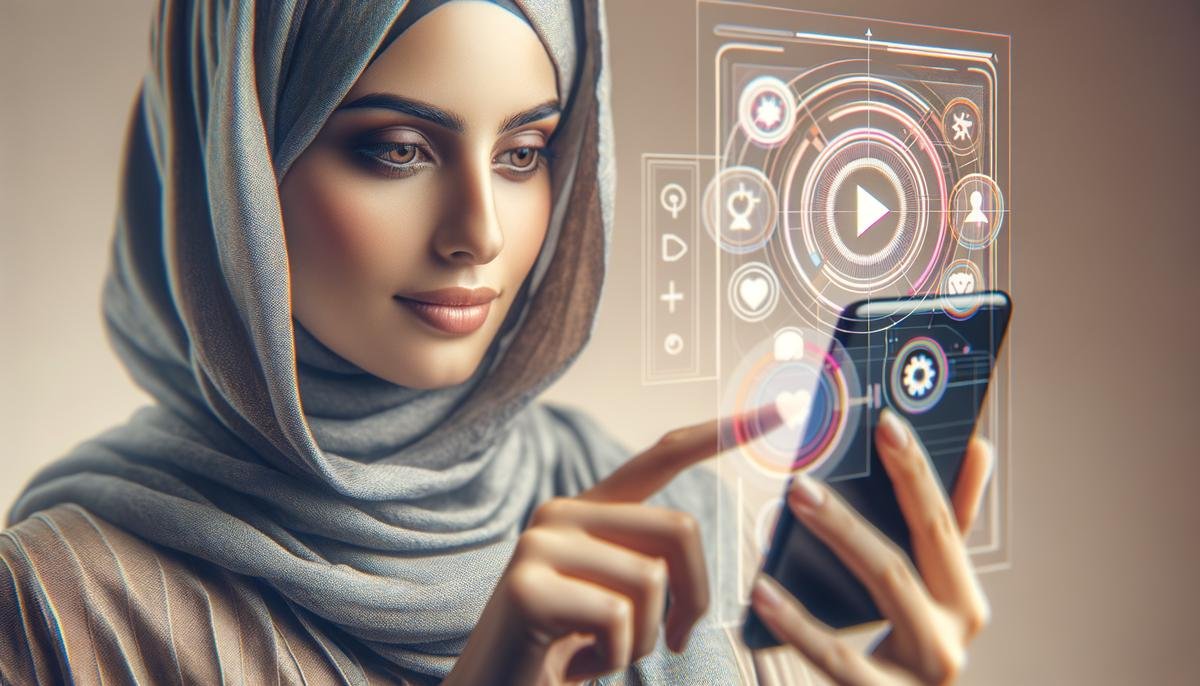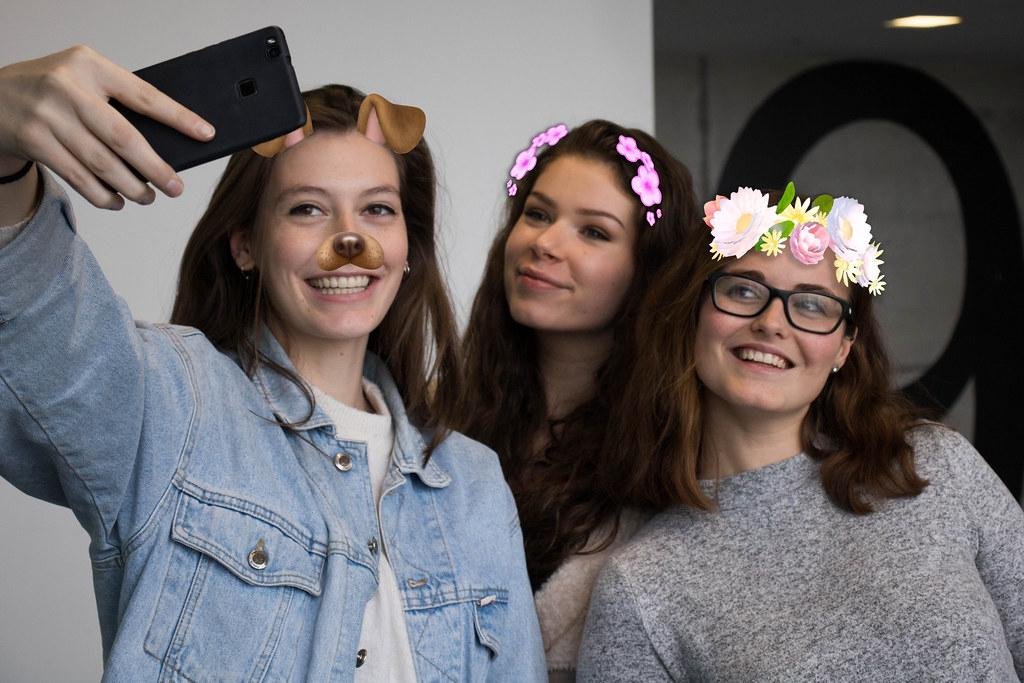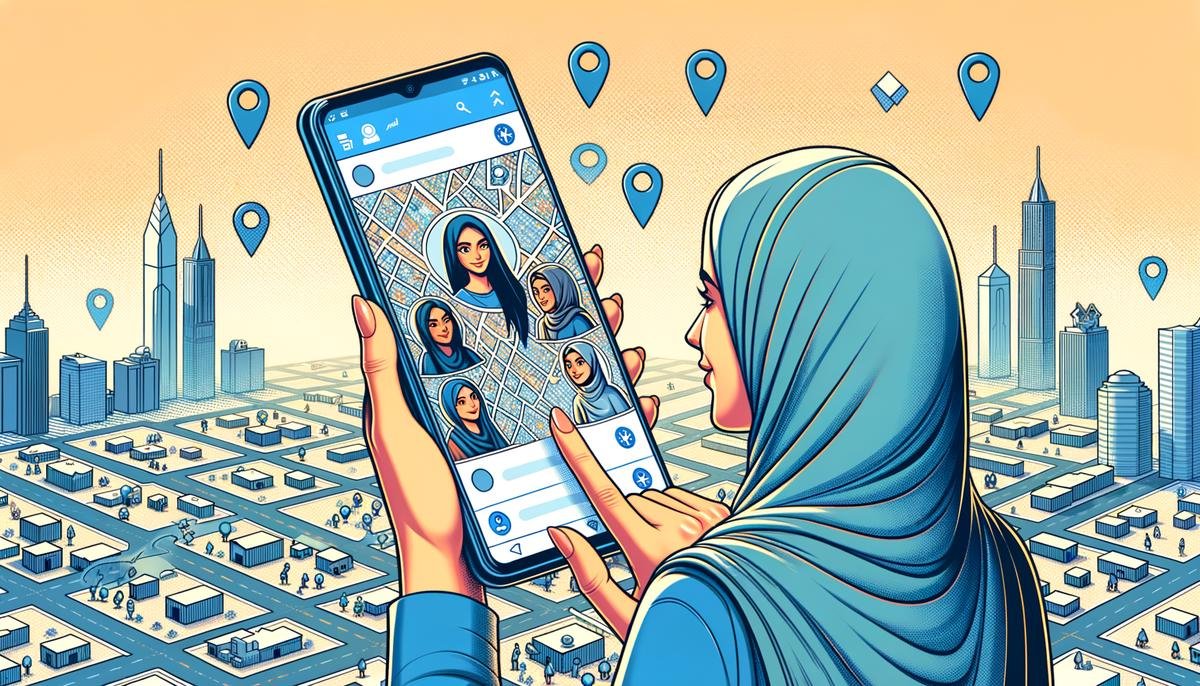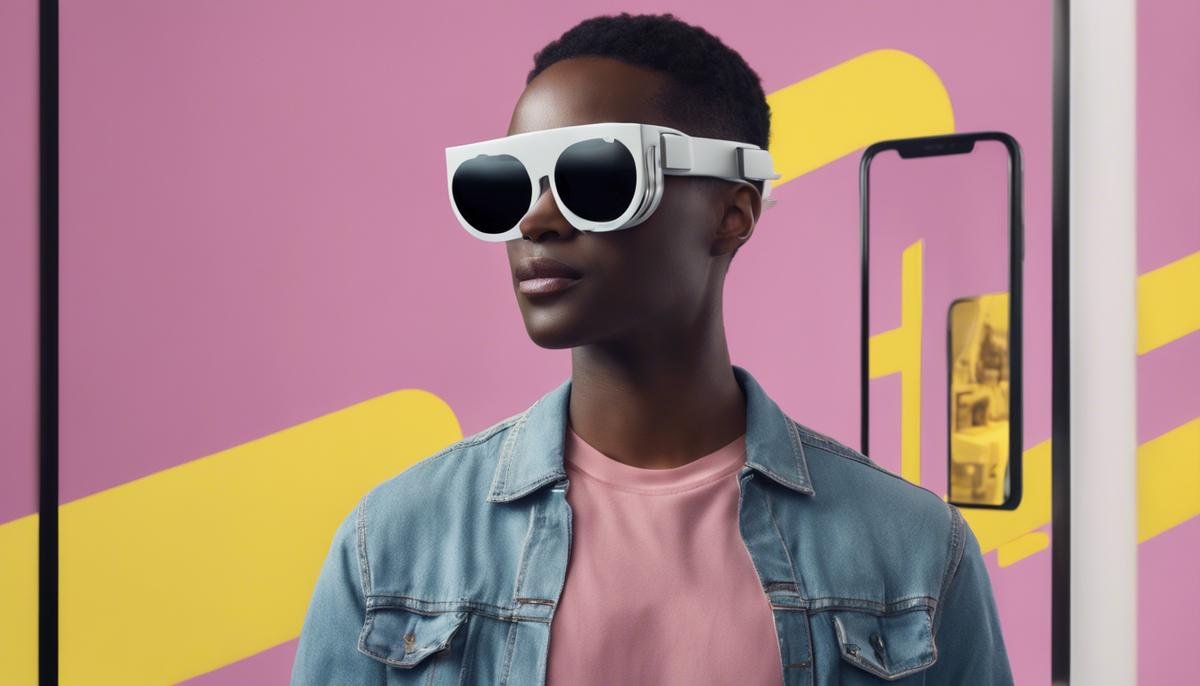Snapchat’s journey from a photo-sharing app to a leader in augmented reality (AR) and artificial intelligence (AI) showcases the evolving landscape of digital interaction. This progression reflects how we engage with technology, merging our physical and digital lives.
Snapchat’s AR Evolution
Snapchat began as a platform for sharing disappearing photos and messages but quickly distinguished itself by pioneering AR in social media. This journey started with the introduction of Lenses in 2015, allowing users to transform their appearance in real-time through filters. Powered by face detection technology, these Lenses could alter one’s face in humorous ways or overlay digital content onto the physical world.
Snapchat’s commitment to AR deepened with the acquisition of Looksery in 2015, incorporating more sophisticated facial recognition and tracking technologies. As AI progressed, Snapchat kept pace, using machine learning to make Lenses more interactive and responsive. Filters began to not just recognize faces but also understand expressions, transforming smiles into animated wonders or changing scenery based on camera detection.
Recently, Snapchat’s Lens Studio has democratized AR creation, allowing users and developers to craft their own AR experiences. With Lens Studio 5.0, these capabilities expanded, integrating generative AI to produce Lenses based on user prompts. Users can generate textures or alter video aesthetics using simple text prompts—a feature that highlights the merging paths of AI and AR in building immersive experiences.
Snapchat’s AR has practical applications as well. The Snap Map feature uses AR to overlay friend locations in real time, blending physical geography with digital interactivity. These developments contribute to how Snapchat weaves AR into daily social interactions, turning the platform into a canvas for digital exploration.
Snapchat’s AR evolution is about more than just fun filters; it’s about the future where our digital and physical worlds converge. Through innovation in AI and AR, Snapchat enriches how we connect, share, and perceive our environment, hinting at possibilities where our eyes, powered by Snapchat’s lenses, unlock a more interactive world.

AI-Powered Object Recognition
Building upon its AR capabilities, Snapchat has harnessed AI to enhance object recognition. The use of AI algorithms underpins the ability of Snapchat’s filters to detect facial features and movements, facilitating accurate application of AR effects. This integration of AI enhances the user experience.
AI-powered object recognition operates through a process that begins with detecting faces within the camera’s view. Using deep learning models, the system analyzes patterns of pixels to identify facial structures such as eyes, mouth, and nose. By comparing these patterns against a dataset of facial images, Snapchat’s algorithms can accurately identify facial features in various lighting conditions and poses.
Snapchat’s implementation stands out for its real-time processing, enabling filters to adapt instantly to users’ movements and expressions. Whether sticking out a tongue or raising eyebrows, Snapchat filters respond dynamically. This immediacy showcases the power of AI in processing complex visual data quickly.
Beyond recognizing static features, Snapchat’s AI understands facial movements and expressions. This enables a more interactive and personalized experience, as filters react to users’ emotions, adding an extra layer of engagement. An AI algorithm might transform a smile into an exaggerated grin or introduce sparkles into eyes when they widen.
Snapchat’s progression into AI-powered object recognition represents a significant step towards creating an immersive and responsive AR environment. This journey reflects the broader trend of AI intersecting with AR to forge captivating and nuanced experiences. As Snapchat continues to evolve, the potential of combining these technologies opens up new realms of possibility for user interaction.

Generative AI in Lens Creation
The collaboration with OpenAI, particularly the inclusion of technologies such as DALL-E and ChatGPT, marks a pivotal moment in Snapchat’s journey toward revolutionizing content creation. By leveraging Generative AI, Snapchat’s Lens Studio can understand user prompts, converting them into dynamic and individualized AR experiences. This is a significant step in how we interact with the digital world in real-time.
Generative AI operates by ingesting prompts, dissecting the elements, and producing output that mirrors human creativity but at a faster speed and larger scale. When applied to AR through Lens Studio, users can generate custom filters by describing their vision. Using text-to-image AI models like DALL-E, combined with Snapchat’s facial mapping technology, shapes the tools making these customizations possible.
The integration of Generative AI into Lens Studio democratizes AR creation. Traditionally, crafting complex lenses required understanding of coding and design. Now, empowered by the AI capabilities of Lens Studio 5.0, a broader community of creatives can participate. Whether a seasoned developer or a casual user, the platform becomes an inviting canvas for all.
This advancement signifies Snapchat’s ambitions to reinvent how we conceive and engage with digital content. By partnering with entities like OpenAI, Snapchat positions itself at the intersection of technology and creativity, where every user has the power to envision and bring to life a more dynamic world.
These AI-infused filters are more than just app features—they are doorways into uncharted realms of imagination and connection. This use of Generative AI in lens creation is at the heart of why Snapchat remains at the cutting edge of social media. It invites us into a world where the lines between creator and audience, between reality and augmentation, blur intriguingly.

AR for Navigation and Content Discovery
Snapchat’s venture into augmented reality transcends entertaining filters and ventures into practical applications that redefine how we navigate and discover content. At the forefront lies Snapchat’s Snap Map and Discover features, both harnessing AR and AI to curate a user-centric experience that breaks the mold of traditional social media engagement.
The Snap Map leverages AR to blend the digital and physical worlds in an engaging map. Here, you don’t merely see your friend’s locations; they come to life as Bitmoji avatars in real-time settings. Snap Map uses AR to make you feel closer to these moments, no matter how far you are physically. It subtly modifies the essence of connection, embedding it into our everyday digital interactions.
AI steps in to elevate the experience. By analyzing interaction patterns, places visited, and events of interest, Snap Map offers personalized recommendations, leading you towards places you’re likely to enjoy. This personalized geolocation adventure shifts navigation from a task to an exciting activity, making every outing an opportunity for discovery.
Turning to the Discover feature, Snapchat uses AR and AI to revolutionize how we find and consume content. Far from the one-size-fits-all approach of traditional media, Discover is like having a personal content curator. It dynamically adapts to your interests, learning from your interactions to offer relevant news, pop culture, and trends.
What sets Discover apart is its immersive presentation. Utilizing AR, stories go from mere text on a screen to interactive experiences. Imagine reading about a hiking trail and being able to explore a 360-degree view, or watching a chef prepare a dish with step-by-step instructions overlaying the ingredients. Snapchat’s AR brings content into your space, making learning an interactive joy.
Snapchat’s use of AR for navigation and content discovery represents a shift in digital interaction. Blurring the lines between virtual and reality, Snap Map and Discover offer an experience that is personalized, immersive, and engaging through the intelligent applications of AR and AI. The potential in this marriage of technologies is vast, hinting at a future where our digital experiences are as rich as our real-world adventures.

Challenges and Future of AR in Social Media
The fusion of AR and AI in platforms like Snapchat has opened a new chapter in digital interaction, but it’s not without challenges. As we venture into this augmented domain, concerns surrounding user privacy and the technological hurdles of AR integration become significant. Yet, the potential future developments in AR present exciting possibilities for the evolution of social media.
One primary concern in incorporating AR and AI into social media is user privacy. As platforms gather and analyze user data to create personalized experiences, the risk of infringing on privacy escalates. Snapchat walks a tightrope by using facial recognition and location tracking to fuel its AR features. This raises questions about data storage, access, and usage beyond intended purposes. Addressing these concerns requires a balance between enhancing user experiences and safeguarding personal information.
Moreover, technological limitations of AR present another hurdle. Despite advancements, creating a fully integrated, real-time, and universally accessible AR experience remains a challenge. Issues such as device compatibility, processing power, and battery life can hinder seamless operation of AR features. Ensuring AR functionalities are accessible and provide consistent user experiences across various hardware platforms is a significant challenge platforms like Snapchat must address.
Looking to the future, the potential developments in AR for social media are transformative. One exciting possibility is further integration of AR with wearable technology. As AR glasses become more refined and commonplace, they could offer new modes of interacting with social media, allowing users to access content and connect with friends hands-free. This would bring a level of immersion and convenience previously unattainable.
Another promising direction is the enhancement of real-time co-presence features. Imagine sharing a virtual space with friends or family, where everyone’s avatars can interact in real-time within an AR-enhanced world. This would represent a leap in social connection, blurring the lines between physical and digital interaction.
The evolving capabilities of AI could enable more intuitive and interactive AR experiences. Future AR platforms might anticipate user needs or gestures, providing information or content before it’s requested. This level of anticipation, powered by AI understanding of individual habits and preferences, could redefine the user experience, making it truly personalized and intuitive.
While challenges like user privacy concerns and technological limitations pose hurdles to widespread adoption of AR in social media, the potential for future innovations remains boundless. Platforms like Snapchat are at the forefront of this digital frontier, navigating the complexities of integrating AR and AI to create enriching, engaging, and immersive experiences. As our digital lives become increasingly intertwined with AR, the future of social media promises to be an exciting journey into augmented realities that deepen connection and transform interaction.

- Snapchat. Introducing Lenses. Snap Inc. 2015.
- Snap Inc. Snap Inc. Acquires Looksery. Snap Inc. 2015.
- Snapchat. Introducing Lens Studio. Snap Inc. 2017.
- Snap Inc. Snap Map: A New Way to See What’s Happening. Snap Inc. 2017.
- Snap Inc. Introducing the Next Generation of Lens Studio. Snap Inc. 2022.
- Snapchat. Privacy Center. Snap Inc. 2023.




